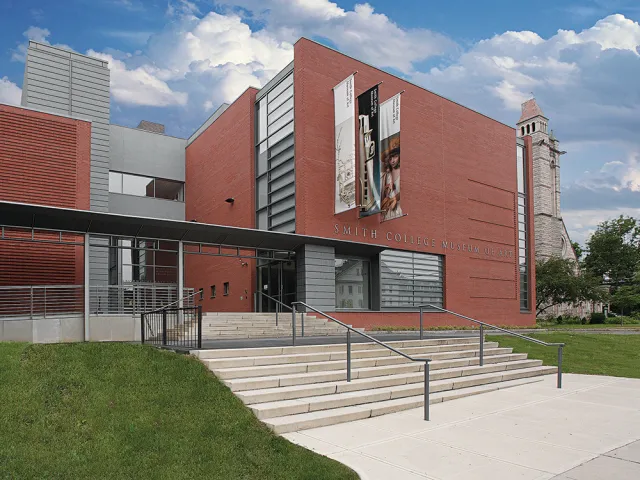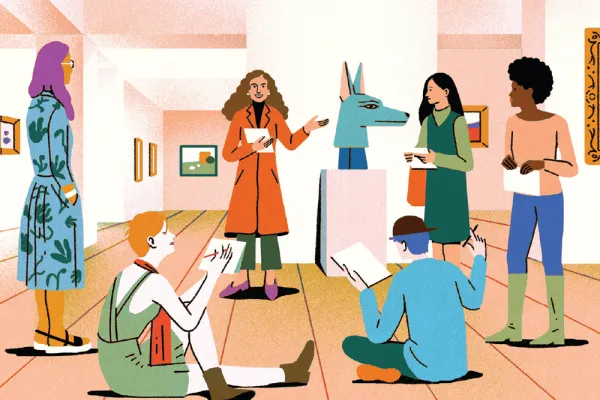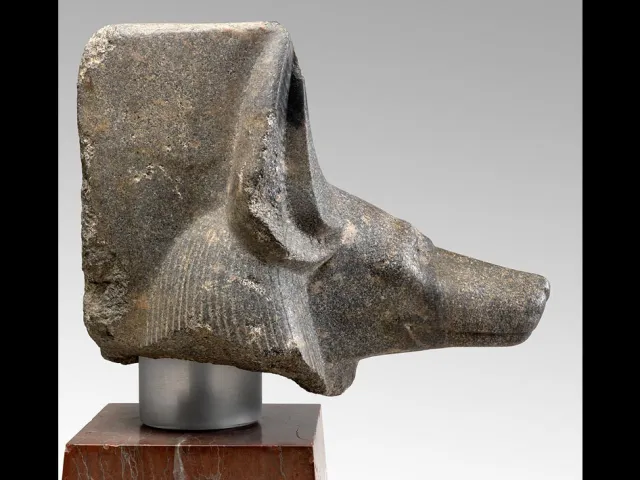A Rich Resource for Teaching
Smith Arts
Museum collection inspires faculty across the curriculum
Published December 3, 2020
In true liberal arts fashion, the Smith College Museum of Art (SCMA) is a resource for experience-based teaching and learning across a variety of disciplines, including archaeology and film studies.
“Even though I spend a lot of time in the field with my students, taking them to the museum gets us out of the traditional classroom even more,” says Bosiljka Glumac, professor of geosciences. Glumac created her Archaeological Geology of Rock Art and Stone Artifacts class, which encompasses geology and archaeology, specifically to make use of SCMA’s rich collection. Students survey art made of stone, noting what stone was used and why. Glumac’s class often studies the ancient Egyptian sculpture Jackal Headed God Anubis, circa 1386–1349 BCE, one of the oldest works in the SCMA’s collection. “We not only think about scientific information related to the object,” she says, “but also how and why this information is presented to the general public, and what might be some effective ways to learn from museum displays.”
Alex Keller, professor of film and media studies and director of the Kahn Institute, teaches both black box and white cube moving images—films made for theaters or those intended to be viewed in a museum setting. She calls the museum one of Smith’s greatest assets and uses the museum itself as a work of art in her teaching.
In Keller’s Women in American Cinema course, the class studies the 1999 film Boys Don’t Cry, based on the life of American trans man Brandon Teena. Her class then compares it to the smaller experimental film She Gone Rogue on the same topic, which is part of the SCMA collection. Further, SCMA curators join the class to discuss the experimental film’s significance to the museum. “They talk about how they acquired it, how they exhibited it originally and what the reception of the work was like,” Keller says. “That gives our students a whole other perspective.”
Glumac says the museum not only expands her students’ thinking but also inspires her own approach to teaching. “The museum encourages me to be creative in my thinking, teaching and research,” she says. “As a scientist, I can’t stop imagining new ways of interacting with the museum, and I feel that I never leave the museum the same as when I walked in.”
This story appears in the Winter 2020-21 issue of the Smith Alumnae Quarterly.

SCMA at 100
The Smith College Museum of Art houses more than 27,000 objects representing a diversity of art, cultures and time periods. Enjoy the following stories in celebration of the museum’s centennial.
- Director and Chief Curator Jessica Nicoll ’83, A Place to Celebrate Art
- Janice Carlson Oresman ’55, Connoisseurship for Life
- Thelma Golden ’87, ‘Central to My College Universe’
- Alums reflect on how the Smith College Museum of Art changed the trajectory of their lives
- ‘Oh, Good, There’s a Museum Shop!’
Illustration by Yifan Wu

